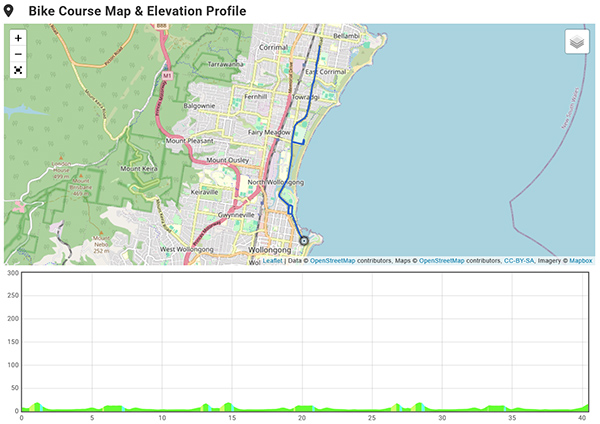Elite Energy, the organizer of the 2025 World Triathlon Championship Finals, which also hosts the Standard Distance Aquabike World Championship, has released some intriguing details about the racecourse and event schedule.
As anticipated, the swim will feature a single-lap course, described as “a mix of protected harbour and open ocean water.” However, as usual, the bike course attracts more attention. Although a bike course map isn’t yet available on the event website, a detailed description provided allowed me to create an accurate preliminary map. While the overall layout should be quite precise, the exact locations of the U-turns might vary slightly.

What is clearly detailed is the location of the finish line. If you’ve read my previous article, you might recall that the latest edition of the World Triathlon Competition Rules specifies that the aquabike finish line must be placed between 100 and 200 meters before the dismount line. However, in Wollongong, the finish line will be positioned nearly half a mile from the dismount line. Initially, this decision appears odd since there is a long, straight road from the aquabike finish to T2. Yet, there is indeed a good rationale behind this choice. The aquabike finish line will now be situated at the top of a slight hill. By placing the finish uphill, the organizers prevent high-speed sprint finishes alongside slowing triathletes, which would be risky if the finish line were closer to T2.
Unlike in previous editions, the event organizers have evidently put considerable thought into the placement of the aquabike finish line, aiming to ensure a fair and safe finish for both triathletes and aquabike competitors. Let’s hope that World Triathlon accepts this practical solution, despite it not strictly adhering to competition rules.
Nevertheless, an even bigger concern from last year’s event was traffic congestion on the bike course. Similar to Torremolinos, Wollongong will feature a three-lap bike course, which is admittedly not ideal. However, traffic conditions should be less problematic for two key reasons. Firstly, fewer athletes are expected to travel to Australia compared to Spain – so the field of competitors should be notably smaller in the triathlon as well as in the aquabike race. Secondly, there will be a 25-minute gap between the start of the last triathlon start wave and the first aquabike wave. Although this gap is shorter than ideal, it will allow more triathletes to complete their bike segment before aquabike competitors hit the road. With these factors considered, it is hoped that traffic issues will be less significant than in Torremolinos.
